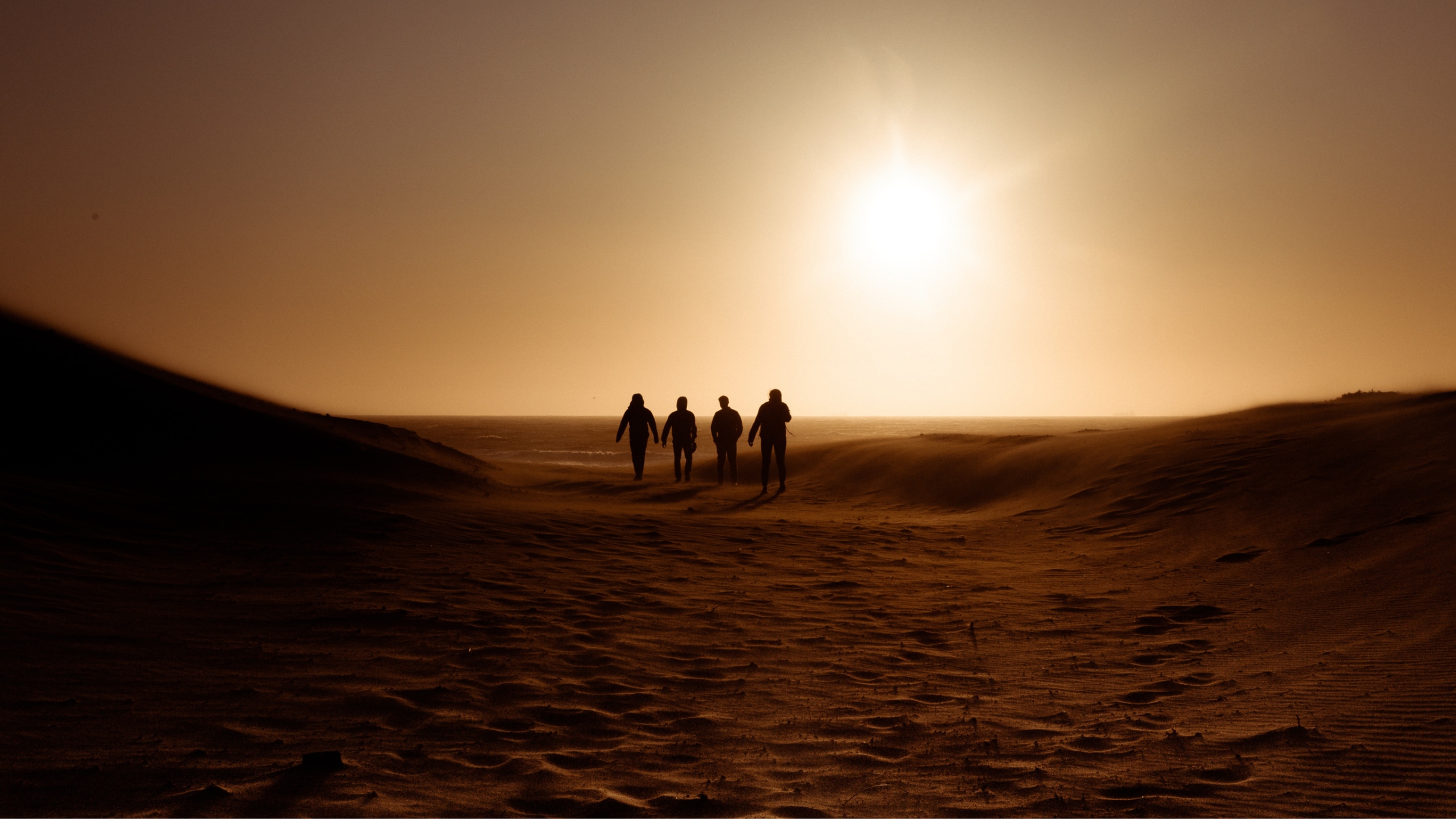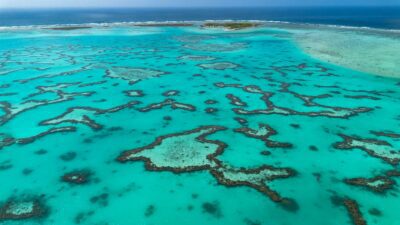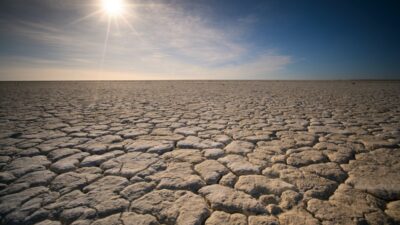Sydney Business Insights

What in the world happens if we run out of sand?
Did you know that sand is the most commonly used natural resource in the world, along with water and air?
Sand is a critical ingredient in our material world – our cities are literally built with sand. Sand is the key ingredient in cement and asphalt. Roads and buildings, bridges and foundations – none would exist without it. Sand is also an essential element in windows – in homes and buildings, car windscreens, smartphone screens, laptop screens.
But now the world is running out of ordinary, commercial-grade sand. And the fight for sand is getting deadly and merciless.
Sand, sand everywhere, but not every grain is good
You might ask, why are we out of sand when sand is everywhere, with deserts growing around the world? But not all sand is the same. The way sand interacts with air and water determines its commercial viability.
Getting into the technical nitty gritty – grains of sand that have been shaped by the wind (think deserts) are round. Compound products like concrete and glass need sharp-edged sand grains. Water produces ‘edgy’ grains of sand – meaning commercial grade sand needs to be harvested from the seabed, from rivers or underground sediment where oceans previously flowed.
And we are running out of this kind of sand.
The world is hungry for sand
About 50 billion tonnes of sand is extracted annually, which translates to about 17 kilograms per person in the world. That’s enough to build a wall 27 metres high and 27 metres wide wrapping all the way around the world. The world’s demand for sand is increasing by about five per cent a year. That’s just a rough guesstimate because this is an unregulated industry, which is part of the problem.
The world’s demand is fuelled by the rapid urbanisation megatrend which will see about 70% of the world’s people living in cities by 2050. The world will need to build eight cities the size of New York every year for the next 30 years to accommodate this rapid urbanisation. China has used more sand in the last 10 years than the US has in the last 100.
Sand is linked to all 17 of the UN’s Sustainable Development Goals and the UN says current sand extraction is leading to a global ‘crisis’.
Floating cities, sandy footings
In what might seem an exquisite irony, the Middle East is running out of sand because many of its rising cities are built on land ‘reclaimed’ from the ocean. This process requires the surrounding seas and ocean to be filled-in with sand. And desert sand is neither good for creating artificial islands nor for building high into the skies.
Similarly, Singapore, the world’s largest importer of sand, is expanding its real estate footprint over and above its surrounding seas. In the 1960s Singapore’s land area was 581.5km2, today it is 725.7km2 and growing. China has built islands to house luxury resorts and Nigeria’s capital Lagos is building a 9.7 square kilometre extension to its Atlantic shoreline.
Illegal sandhills
Australia is the world’s second largest exporter of sand behind the US, according to OEC data, but most sand world-wide is harvested and used within country. And the unregulated nature of sand extraction means that a lot of mining in many countries is happening illegally.
In India there are dozens of illegal sand mining cases underway. The ‘sand mafia’ are a recognised social force and have murdered more than 400 people, including police, government officials and local activists. Likewise in South America, in Kenya, Gambia and Indonesia sand mafias have injured and killed dozens of people – aged from 81 to 22, shot, hacked and burnt to death. The world is addicted to sand.
Sand v the environment
Over-extraction of sand can devastate entire ecosystems. Too much dredging destroys riverbeds, kills fish and plants, causes riverbanks to collapse, bridges to cave in, fields to be flooded. Research shows that more than 1,000 threatened species of plants and animals on the International Union for Conservation of Nature’s ‘red list’ are impacted by sand and gravel mining.
Vietnam’s Mekong Delta provides half that country’s food and much of the rice that feeds the rest of Southeast Asia. Prior to the pandemic concerns were raised about the level of sand extraction and the building of dams that diminish the flow of sediment to the Delta. However illegal sandmining in the Delta has exploded during the pandemic. Both economic duress and lack of policing resources – diverted to COVID-19 duty – has contributed to the rampant gorging of valuable sand. The World Wide Fund for Nature believe that nearly half the delta will be wiped out by the end of this century.
In Sri Lanka sand removal has reversed the water flow causing salty ocean water to flow inland destroying crops and bringing salt water crocodiles. Some 24 Indonesian islands have been obliterated by sand mining. Miners with permits are supposed to pay for land restoration but an estimated 70% of sand miners operate without a permit.
In Africa the excessive removal of sand from beaches has altered the coastline and accentuated the impact of climate change and erosion.
Sand alternatives
The world needs to come up with an alternative to sand mining. Norway is experimenting with crushing rocks and ‘hempcrete,’ a lightweight concrete constructed from a mix of hemp, lime and other materials, can substitute for sand based concrete in some areas of building (such as insulation and non-weight bearing walls) but is not suitable for foundations.
Recycling sand from the build environment (such as from concrete) is also part of the new picture but these processes will only become economically viable when the real cost of sand, currently only a small component of building costs, is accounted for. While sand remains under-priced there is no business case for innovation.
Unless companies are required to investigate their supply chains to ensure their sand is legally extracted and not damaging the local environment there is no way to account for the real cost of sand as a component of building projects.
We need to start counting grains
The UN has proposed sand be recognised as a strategic resource and that it be regulated much like other extracted resources –water, oil, gas and coal. Regulating sand extraction would be the start of ensuring legal supply chains. It would also facilitate environmental compensation for habitat loss as well as the social and economic impact caused by the extraction.
It should be well within the remit of proper business practices to develop a “sand paper” setting out an environmental accounting process for sandmining, including capturing the costs all the way along the supply chain.
Image: Wendy Wei
Sydney Business Insights is a University of Sydney Business School initiative aiming to provide the business community and public, including our students, alumni and partners with a deeper understanding of major issues and trends around the future of business.
Share
We believe in open and honest access to knowledge. We use a Creative Commons Attribution NoDerivatives licence for our articles and podcasts, so you can republish them for free, online or in print.







